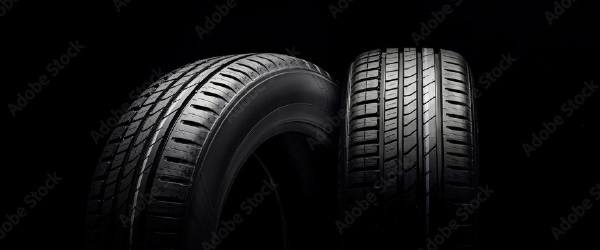VERTICAL FOCUS: Automotive Aftermarket

Here’s a look at supply chain trends in the automotive aftermarket space.
Tire Market Keeps Rolling
At a time when the automotive aftermarket economy—like everything else—is on shaky ground, tire manufacturers feel as if their road may be a little smoother than others. The tire sector is predicted to fare pretty well, according to recent 2023 market analysis from Tire Review magazine.
Federal Reserve data shows U.S. industrial production of tires climbed 3.5 points in August 2022 from a month earlier, and was also up 4.2% over August 2021 levels. This increase in domestic tire production volume indicates that supply chains are being freed from historic bottlenecks, giving manufacturers an opportunity to supply tires for inventory, the analysis shows.
Three key automotive indications fuel this positive outlook for the tire sector:
1. Gas prices are coming down. The four-week moving average of gas prices was down to $3.71 a gallon at the end of September 2022, according to data from the U.S. Energy Information Administration. While still up 17% from the same time last year, the trend is a favorable one.
2. Truck tonnage is increasing. The Truck Tonnage Index, which measures the gross tonnage of freight transported by truckers in the United States for a given month, was up sharply in June 2022, with a one-month gain of 2.9%, and a year-over-year change up 8%, according to the U.S. Department of Transportation and the American Trucking Associations. These kinds of strong increases in trucking activity help to support future heavy-duty tire sales and service.
3. Retail sales have remained strong. Retail sales at auto parts, accessories, and tire stores remained strong in July, according to Census Bureaus data. Sales were up 0.3% from the month earlier, and up a more substantial 11.1% compared to July 2021.
Unlocking Efficiency for Reconditioned Vehicle Dealers
A picture may be worth 1,000 words, but photos may also help sell 1,000 vehicles.
In today’s fast-paced market, auto dealers selling reconditioned vehicles need to load photos on their website’s vehicle detail pages as quickly as possible, so they can boost clicks and leads. Streamlining photography and merchandising of vehicles is crucial for dealers.
A new partnership helps dealers unlock efficiencies in this area. Dealer Image Pro, a professional photo, video, and interactive software provider for automotive dealerships, recently integrated its Photo Assistant and Autoport software with reconditioning workflow software from Rapid Recon to improve time to market for reconditioned vehicles.
With the Rapid Recon status of their used vehicles displayed within the Photo Assistant and Autoport inventory dashboard, dealership sales teams can quickly identify the stage of the reconditioning process for a specific vehicle—and whether it is ready to be photographed.
Once photos are ready, Dealer Image Pro provides inventory photo feeds directly to Rapid Recon, which makes it easier for dealership staff to verify that the photos have been published on the website.
Right to Repair Act: The Right Move for the Automotive Aftermarket?
A new bill, H.R. 6570, known as the Right to Equitable and Professional Auto Industry Repair, or REPAIR Act, has the automotive aftermarket industry buzzing.
Introduced into the House by Rep. Bobby Rush (D-Illinois) earlier in 2022, it centers around how making vehicle data available will spur greater competition in the aftermarket repair segment.
Here’s a quick breakdown of the bill:
Overview: The bill will ensure that owners and independent shops have access to necessary vehicle repair and maintenance tools and data. It requires automobile manufacturers to provide the same information to independent repair shops as they do for dealer shops. This includes all tools and equipment, wireless transmission of repair and diagnostic data, and access to onboard diagnostic and telematics systems needed to repair a vehicle.
Supporters: Proponents of the bill include The Automotive Aftermarket Suppliers Association, Auto Care Association, Consumer Access to Repair Coalition, and Specialty Equipment Market Association.
Status: In February 2022, the Committee on Energy and Commerce referred the bill to the Subcommittee on Consumer Protection and Commerce. In June 2022, New York became the first state in the country to pass its own Right to Repair Act.
Global Auto Performance Parts Market on the Rise
High expectations surround demand for automotive performance parts going forward, according to a recent report from Future Market Insights, which says the market is likely to reach nearly $340 million by the end of 2022—and skyrocket to $532 million by 2032. The report cites escalating demand for passenger cars and a rise in disposable income across the globe as the driving factors.
Here are some key takeaways from the report:
- The automotive performance parts market in the United States will account for 87% of the market share in North America.
- Sales of shock absorbers will grow at 4.6%.
- Sales of torque converters will hit a 5.8% compound annual growth rate (CAGR).
- The air filters segment will grow at a CAGR of 4.2%.
- Asia Pacific is projected to lead the global automotive performance parts market by 2032.
The Trendiest Aftermarket Vehicles
Which vehicles are the top trend-setters for the automotive aftermarket? Exhibitors at the recent Specialty Equipment Market Association (SEMA) show voted for the vehicles that represent the best business opportunities for the aftermarket.
SEMA Award finalists represent exhibiting automakers that support the aftermarket with accessory-friendly models based on their potential for customization.
The finalists are:
SEMA Car of the Year
Nissan Z
Dodge Challenger
SEMA Mid-Size Truck of the Year
Jeep Gladiator
Toyota Tacoma
SEMA Full-Size Truck of the Year
Ram
Toyota Tundra
SEMA 4×4/SUV of the Year
Jeep Wrangler
Toyota 4Runner
SEMA Sport Compact of the Year
Toyota GR86
Volkswagen Golf GTI
SEMA Electric Vehicle of the Year
Nissan Ariya
Volkswagen ID.4
**Many of today’s automakers are switching back to vertically integrated supply chains for greater control and resilience. Learn more about the strategy here.
